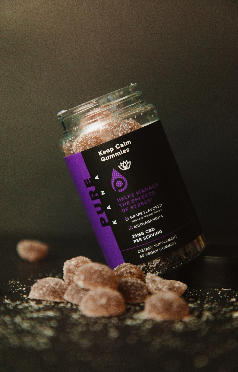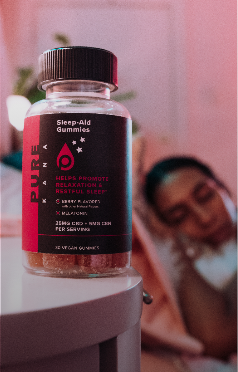Being busy gets in the way of everyone’s life at some point or another. For people with 9-5 jobs, it can feel like half of their time has been sucked away by their job. The last thing you want after a long, hard shift is to hit the gym (and we won’t even mention the idea of getting up earlier).
It might be even more challenging for workers with families, secondary part-time jobs, and other life events. But don’t worry; there are some straightforward ways to stay in good shape despite your jam-packed schedule.
Here are nine tips and tricks for staying in shape when you have a busy schedule.
1. Walking
Forget the gym; walking is sometimes the best exercise you can do. It’s completely free of charge, and it’s a possibility for individuals of all ages and fitness levels.

First of all, walking can help you burn calories and improve heart health. There are more benefits beyond this, too. It keeps you mobile, ensuring your joints get some movement and improves fitness levels.
If possible, walk to work or to the grocery store. If you’re traveling a short distance, try to do it on foot. If this isn’t possible, park your car in a space furthest from the entrance and walk the entire parking lot. Or schedule in a short walk before or after work – or even on your lunch break.
2. Move Around
Lots of jobs nowadays are sedentary, meaning you are seated in a chair for long hours at a time. But sitting for extended periods isn’t good for you.
It’s essential to move around as much as possible during the day. This can mean taking the stairs instead of the elevator, taking a quick break to walk around the office, or even sitting on a fitness ball instead of a chair.
If your colleagues are also interested in getting in shape, you might introduce a daily challenge. There’s nothing quite like competition to get people motivated.
3. Get Breakfast Right
Breakfast is the most important meal of the day, so they say. It breaks the overnight fasting period, making it essential for boosting energy levels.
The healthiest breakfasts will contain something from the major food groups, including protein, dairy, grains, and fruits or vegetables. A good breakfast will look slightly different for everyone, but no matter who you are, it’s essential to start your day with a healthy meal. If possible, try to avoid processed foods in the morning.
You can make your brekkie even more delicious by adding some CBD to it. Our favorite options are CBD smoothies or drizzling a little CBD oil on scrambled eggs and avo toast.
4. Avoid Munchies
Snacking can be detrimental to your health because it can easily lead to weight gain. Of course, if you are hungry, then it’s likely that your body needs fuel. However, many of us fall victim to mindless eating out of boredom or stress, and that’s where the problem comes in.
You can help yourself avoid snacking by:
- Eating high-protein meals that keep you fuller for longer
- Using visual reminders to stop snacking
- Replacing junk food with healthy snacks
- Staying hydrated
Eating balanced meals rather than snacking on processed foods all day can help you to keep your body trim and in shape.
5. Stay Hydrated
Staying hydrated does more for your body than just stopping you from snacking. Drinking more water might help with weight loss, which is why around half of US adults who are trying to lose weight increase their water intake.
First of all, drinking water might help you burn calories. Furthermore, it could reduce your appetite, ensuring that fewer calories are consumed.
Staying hydrated can be difficult if you’re not used to it. Invest in a water bottle and keep it on hand for consumption at regular intervals throughout the day.
6. Stretch at Regular Intervals
Stretching is surprisingly crucial for the body, and it’s vital for staying in shape. Regular stretching can improve flexibility, which becomes increasingly important with age. It can improve the range of motion and increase blood flow to the muscles. Plus, it might improve posture.

Sometimes, sitting around all day can lead to poor posture, which can have adverse health effects over time. Not to mention, it may cause back pain, which stretching might fix.
Some stretches can be done at work, including shoulder stretches that you can perform from the comfort (or discomfort) of your desk. Get into the simple habit of doing a few stretches before bed, too.
7. Sit in the Right Posture
Speaking of posture, it can have a significant impact on health. Poor posture can lead to back and neck pain, headaches, and more. Feeling bad can prevent you from getting enough exercise, ruining your good physique.
Plus, a good posture can lead to better energy levels. When your muscles and joints are in the correct alignment, there’s less strain on them, and they can perform as intended.
Correct posture might even improve your circulation, which in turn helps with digestion. When your digestive system and gut are working well, and you’re eating healthy, it’s easy to lose weight and stay in shape.
8. Get at Least 7 Hours of Sleep
Sleep deprivation is a significant issue in the modern world. Sleep is vital for the body, just as much as food and water. It has an enormous impact on both mental and physical health.
Good quality sleep can help with fatigue, so if you have trouble concentrating during the day, then it could be related to sleep. Plus, it can regulate your appetite, reduce the risk of mood disorders, and more.
Sleep is absolutely essential, so if you’re trying to stay healthy and ensure your body is in peak physical condition, getting rest is critical.
9. Supplements and Vitamins
A modern life hack for staying in shape is to use vitamins and other supplements. Multivitamins are a popular option because they provide multiple supplements packed into one convenient capsule.
However, CBD has taken over from other supplements as king of the industry. Lots of users are switching to CBD to maintain their overall health and wellbeing. When taken in conjunction with an otherwise healthy and active lifestyle, it can help to maintain mental and physical wellbeing.
There are lots of easy ways to take CBD at work, too. From flavored tinctures to subtle gummies, PureKana has tons of ways to use CBD during a busy day, helping to boost your focus and keep you in shape.
Final Thoughts
No matter how busy you are, there are some ways to stay in shape. It’s possible to work activity into your routine no matter what, whether you’re stretching at your desk or taking the stairs in place of the elevator.
Alongside these other methods, more and more workers are choosing to use CBD to keep themselves fit and healthy. Try some of the PureKana range today to find out what the hype is all about.












 https://premiumjane.com/
https://premiumjane.com/